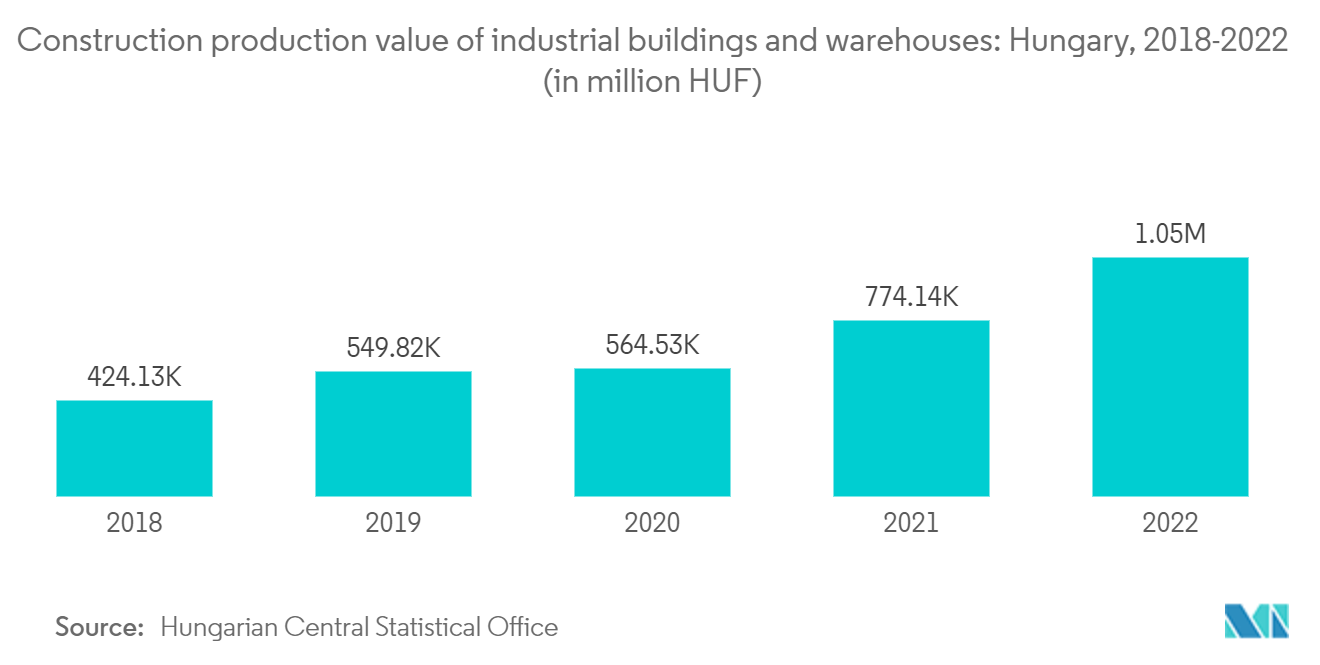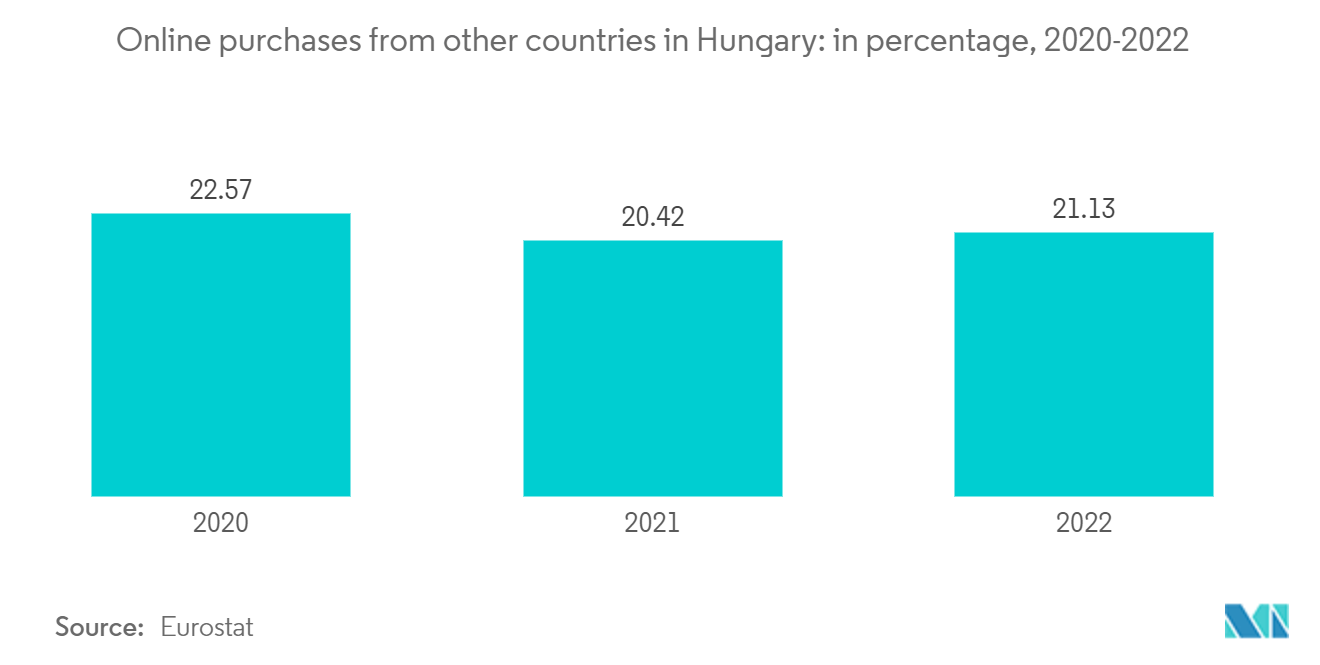Market Trends of Hungary Warehousing Sector Industry
Increase in logistics space construction
- Total industrial stock in Hungary reached 4.7 million sqm, of which 3.2 million sqm is located in the Greater Budapest area as of the first quarter of 2023. The area around the capital continues to dominate the logistics market as developers and park operators establish complexes at locations with direct access to the MO orbital motorway, providing a direct highway connection to the city, Ferenc Liszt International Airport, major regional Hungarian hubs, and international road links.
- The construction production value of industrial buildings and warehouses in Hungary increased overall during the observed years. In 2022, this value peaked at HUF 1,051 billion (USD 3 billion).
- In Veszprém, Hungary, sensor technology specialist Balluff has expanded its fulfilment offering with the merging of four warehouses to enable a more centralised, automated logistics operation. The company, which provides smart devices for logistics processes, has said its new operation will provide increased capacity.
- A major part of the expansion includes a fully automated small box storage system for parts and semi-finished products, plus a new narrow-aisle storage system for pallets and long goods.
- Both systems were designed to enable high conveyor and lifting speeds with optimal space utilization, with the new 5,000m² sites marking a significant milestone for both the company and the logistics area’, according to Balluff.

Growth in e-commerce market
- Hungary is the 57th largest growing ecommerce market. Citing the boost e-commerce could give Hungary’s productivity and innovation, the Hungarian Government continues to place a high priority on advancing this sector.
- E-commerce in Hungary is expected to have a USD 2.04 billion total turnover in 2020, representing 6.2% of the total retail trade. Revenue is expected to show an annual growth rate of 7.3%, resulting in a market volume of USD 2.706 billion by 2023. Online retail and web-shop concepts have been growing steadily since 2010.
- In 2022, electronics and fashion were the leading segments with regard to e-commerce sales, with electronic products generating USD 1.2 billion in terms of revenue. During the previous year, the highest number of online purchases was recorded in the apparel, fashion, and sports products category, reaching over 14 million.
- One of the most important indicators of the rudimentary consolidation of the Hungarian e-commerce market is the merger of two key players, eMAG Hungary, and Extreme Digital. As through the fusion of the companies eMAG Romania becomes the majority shareholder of the new entity, the merger marks a step towards creating a larger e-commerce ecosystem in the region.


